
The Gulf of California, also known as the Sea of Cortés or Sea of Cortez, or less commonly as the Vermilion Sea, is a marginal sea of the Pacific Ocean that separates the Baja California peninsula from the Mexican mainland. It is bordered by the states of Baja California, Baja California Sur, Sonora, and Sinaloa with a coastline of approximately 4,000 km (2,500 mi). Rivers that flow into the Gulf of California include the Colorado, Fuerte, Mayo, Sinaloa, Sonora, and the Yaqui. The surface of the gulf is about 160,000 km2 (62,000 sq mi). Maximum depths exceed 3,000 meters (9,800 ft) because of the complex geology, linked to plate tectonics.

Fernando Consag, known in his native Croatian as Ferdinand Konščak, was a Croatian Jesuit missionary, explorer and cartographer, who spent most of his life in Mexico, in Baja California.
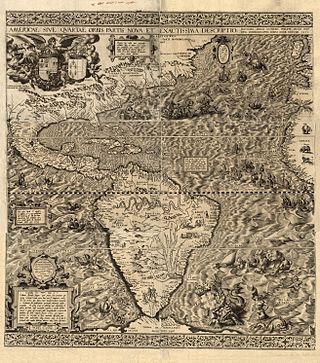
Multiple theories regarding the origin of the name California, as well as the root language of the term, have been proposed, but most historians believe the name likely originated from a 16th-century novel, Las sergas de Esplandián. The novel, popular at the time of the Spanish exploration of Mexico and the Baja California Peninsula, describes a fictional island named California, ruled by Queen Calafia, east of the Indies. The author of the novel, Garci Rodríguez de Montalvo, also known as Ordóñez de Montalvo, is thought to have derived the term California from the Arabic Khalif and/or Khalifa, but he might also have been influenced by the term "Califerne" in the Song of Roland, an 11th-century epic poem written in Old French.
Santa Catalina may refer to:
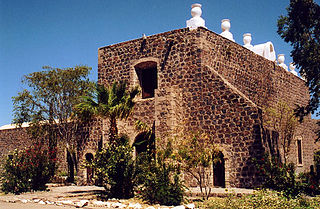
Mulegé is the northernmost municipality of the Mexican state of Baja California Sur. It is the largest municipality by area in Mexico, with an area of 33,092.20 km2. In the 2020 Census, it had a population of 64,022 inhabitants. Isla Natividad is part of the municipality.
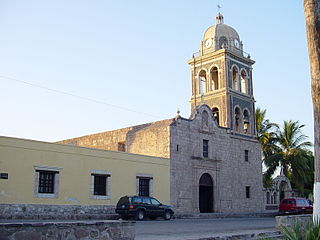
Misión de Nuestra Señora de Loreto Conchó, or Mission Loreto, was founded on October 25, 1697, at the Monqui Native American (Indian) settlement of Conchó in the city of Loreto, Baja California Sur, Mexico. Established by the Catholic Church's Jesuit missionary Juan María de Salvatierra, Loreto was the first successful mission and Spanish town in Baja California.
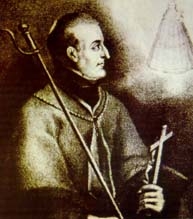
Juan María de Salvatierra, S.J., was a Catholic missionary to the Americas.

The Santa Catalina rattlesnake is a species of pit viper endemic to Isla Santa Catalina in the Gulf of California just off the east coast of the state of Baja California Sur, Mexico. Like all other pit vipers, it is venomous. No subspecies are currently recognized. A relatively small and slender species, its most distinctive characteristic is that it lacks a rattle. They are also a generally nocturnal species. Though the species is classified as Critically Endangered on the IUCN Red List, there are few efforts for the snake's conservation.
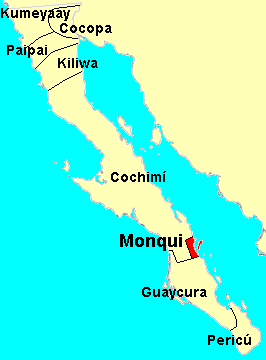
The Monqui were indigenous peoples of Mexico, who lived in the vicinity of Loreto, Baja California Sur, Mexico, at the time of Spanish contact. Monqui territory included about 65 kilometres (40 mi) of coast along the Gulf of California and extended a few kilometers inland to where the Cochimi people lived.

The Cochimí were the indigenous inhabitants of the central part of the Baja California peninsula, from El Rosario in the north to San Javier in the south. Information on Cochimí customs and beliefs has been preserved in the brief observations by explorers but, above all, in the writings of the Jesuits. Particularly important and detailed are the works of Miguel Venegas and Miguel del Barco (1973).
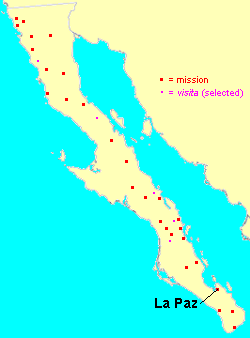
Mission La Paz was established by the Jesuit missionaries Juan de Ugarte and Jaime Bravo in 1720 and financed by the Marqués de Villapuente de la Peña, at the location of the modern city of La Paz, Baja California Sur, Mexico.

Slevin's mouse, also known as the Catalina deer mouse, is a species of rodent in the family Cricetidae. It is endemic to Isla Santa Catalina off the east coast of Baja California Sur, an island with an area of about 40 km2 (15 sq mi), and it is the only native mammal on the island. It is named for Joseph Slevin, a curator at the California Academy of Sciences.

The San Lucan xeric scrub is a xeric shrubland ecoregion of the southernmost Baja California Peninsula, in Los Cabos Municipality and eastern La Paz Municipality of southern Baja California Sur state, Mexico.

Léon Diguet was a French naturalist.
Isla Santa Cruz, is an island in the Gulf of California, east of the Baja California Peninsula in Baja California Sur state.

Ferocactus diguetii, commonly known as the giant barrel cactus, is the largest species of barrel cactus in the genus Ferocactus. It is an insular species endemic to several of Baja California Sur's southern islands in the Gulf of California. As the superlative giant of the barrel cacti, it reaches heights of up to 4 metres (13 ft) and diameters of 1 metre (3.3 ft) in the wild, a result of island gigantism. The species has red flowers that bloom from March to May. Although restricted in range, this species grows in protected habitat and lacks major threats.

Ferocactus townsendianus, commonly known as the Townsend barrel cactus, is a species of cactus endemic to southern Baja California Sur in Mexico. It is a barrel cactus that grows solitary stems up to 1 metre (3.3 ft) tall, with gray to brown spines, with one central spine on each areole usually curved or hooked at the tip, and orange to red flowers that bloom from May to August. Ferocactus townsendianus is similar to both Ferocactus peninsulae and Ferocactus santa-maria, and is sometimes placed under peninsulae as a variety or subspecies.

Bahía de Loreto National Park is a national park on the east coast of the Baja California Peninsula in Mexico, about 203 kilometres (126 mi) north of the city of La Paz in the state of Baja California Sur. The park protects 2,065.81 square kilometres (797.61 sq mi) of relatively pristine marine ecosystem in the central Sea of Cortez, including five large uninhabited islands and many smaller islets in Loreto Bay. It is known for its great variety of coastal environments, such as sandy beaches, sea cliffs, submarine canyons, and marine terraces, and is home to an exceptionally high biological diversity, especially of marine mammals.

Fouquieria diguetii, known by the common names Adam's tree,palo Adán, and Baja [California] Tree Ocotillo, is a plant in the family Fouquieriaceae native to the southern half of the Baja California Peninsula, and the coasts of Sonora and Sinaloa. It is a semi-succulent and deciduous plant related to the ocotillo and the Boojum tree. It is distinguished by its bright red, tubular flowers, a shrub to small tree habit, and conical, paniculate inflorescences.



















